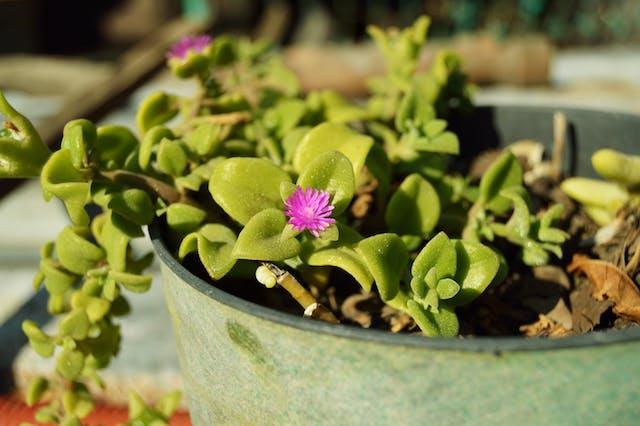
Choose the Right Containers:
When it comes to container gardening, choosing the right containers is crucial. Consider the size, material, and drainage capabilities of the containers. Opt for containers that are large enough to accommodate the root systems of your chosen plants. However, keep in mind that larger containers may be more challenging to move around in small spaces.Select containers made of materials like plastic, fiberglass, or ceramic, as they are lightweight and durable. Avoid containers made of metal, as they can heat up quickly in direct sunlight and harm the roots of your plants. Ensure that the containers have proper drainage holes to prevent waterlogging, which can lead to root rot.
Consider Vertical Gardening:
In small spaces, utilizing vertical gardening techniques can help maximize your gardening area. Look for vertical gardening solutions such as wall-mounted planters, hanging baskets, or trellises. These options allow you to grow plants vertically, saving valuable floor space.Consider growing vine plants like tomatoes, cucumbers, or beans on trellises or vertical frames. Herbs like mint, thyme, or oregano can be grown in wall-mounted planters or small hanging baskets. Vertical gardening not only adds visual interest but also increases your planting capacity in a limited space.
Choose the Right Plants:
Selecting the right plants for container gardening in small spaces is crucial. Consider the growing requirements, size, and suitability of plants for containers. Look for compact and dwarf varieties of vegetables, fruits, or flowers that are well-suited for container gardening.Herbs like basil, parsley, or chives are excellent choices for small spaces. Leafy greens such as lettuce, spinach, or kale can be easily grown in containers. Compact fruiting plants like cherry tomatoes or strawberries are also popular options. Additionally, consider incorporating ornamental plants like dwarf roses, pansies, or petunias for a burst of color in your small garden.
Soil Mix and Fertilization:
Using the right soil mix and providing adequate fertilization is essential for container gardening success. Choose a high-quality potting mix specifically formulated for container gardening. These mixes are well-draining, lightweight, and provide the necessary nutrients for plant growth.Consider adding organic matter like compost or well-rotted manure to the potting mix to improve its fertility. This helps in retaining moisture and provides essential nutrients to your plants. Regularly fertilize your container plants with a balanced fertilizer or organic alternatives to ensure healthy growth and abundant blooms or harvests.
Proper Watering Techniques:
Proper watering techniques are vital for container gardening, especially in small spaces. Containers tend to dry out more quickly than traditional garden beds, so it's important to provide adequate moisture to your plants.Check the moisture level in the containers regularly by sticking your finger about an inch into the soil. If it feels dry, it's time to water. Water the container thoroughly until you see water coming out of the drainage holes. This ensures that the entire root ball is adequately hydrated.
However, be cautious not to overwater, as it can lead to root rot. Ensure that the containers have proper drainage to prevent waterlogging. Consider using self-watering containers or incorporating water reservoirs to maintain consistent moisture levels.
Sunlight and Placement:
Most plants require a certain amount of sunlight to thrive. Assess the sunlight conditions in your small space and choose plants accordingly. Place sun-loving plants in areas that receive at least six hours of direct sunlight per day. Leafy greens and some herbs can tolerate partial shade, but they still require a few hours of direct sunlight.Consider the microclimates in your small space to optimize plant placement. South-facing balconies or windowsills usually receive the most sunlight, while north-facing areas may be shadier. Rotate the containers periodically to ensure all sides of the plants get equal exposure to sunlight.
Pruning and Maintenance:
Regular pruning and maintenance are essential for ensuring the health and vitality of your container garden. Trim back any dead, damaged, or diseased foliage to prevent the spread of pests or diseases. Pinch back leggy or overgrown stems to promote bushier growth.Monitor your plants for signs of pest infestations or diseases. Common pests in container gardening include aphids, spider mites, or whiteflies. Regularly inspect the leaves and stems and take appropriate measures like using organic insecticides or introducing beneficial insects to control pest populations.




